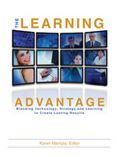From the Preface.The aim of this book is not to answer the question what as to choice of foods, nor why certain processes have been adopted as best suited to their preparation for the table, but it endeavors to tell how to put materials together to produce results pleasing to the eye and palate and nourishing to the body.The choice of foods may be considered in another handbook, but this one is distinctly a cook-book.Cook-books of the past contained recipes for coloring fabrics, healing diseases, for cleaning, for pickling and preserving, yet little by little these processes have become trades, and have departed or are gradually going from under the home roof, probably never to return. The art of cooking still remains, and since the introduction of the chafing-dish and the gas stove is receiving new attention.This book is no rival to the larger cook-books, but presents much in little space, and suggests many short cuts for those who believe in simplifying life and for the busy people who have not time for elaborate processes. It will be most helpful to those who have taste and judgment in other matters, and are willing to use both brains and hands when cooking. Cleanness in every detail and ’’ the application of good sense to the circumstances of the moment are essentials in good cooking.Proportions are frequently given instead of definite quantities, that a recipe may more readily be adapted to the needs of families of different sizes. Uniformly small quantities are used with special reference to families of two or three persons.To save space and avoid repetition of the same process, a single recipe often is given with variations, instead of the many recipes found under one head in larger volumes. Hence the whole of any subject should be studied before undertaking any part of it.

Categories:
Recepies, How to Make the Best Organic Soup Recipe
Brand: Barnes & Noble Press
12.49 USD
Buy Now



















